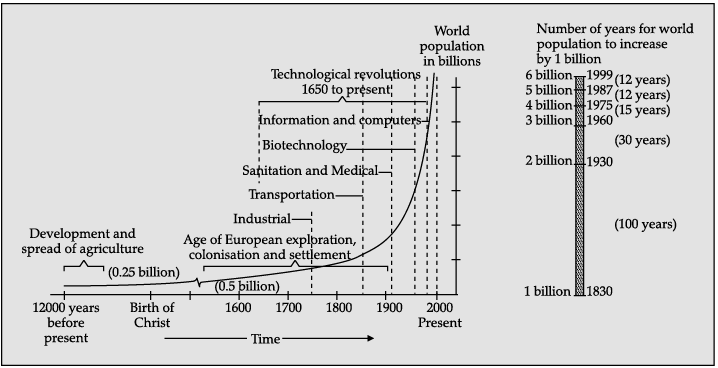Test: The World Population- Graph Based Type Questions - Humanities/Arts MCQ
12 Questions MCQ Test Geography Class 12 - Test: The World Population- Graph Based Type Questions
Study the given graph carefully and answer the following questions:

Why is Brazil sparsely populated?

Study the given graph carefully and answer the following questions:

What does the transition from high fluctuating stage to low fluctuating stage indicate?

| 1 Crore+ students have signed up on EduRev. Have you? Download the App |
Study the given graph carefully and answer the following questions:

What is the speciality of the period 1650 CE to present?

Study the given graph carefully and answer the following questions:

In which stage of Demographic Transition, population explosion took place:
Study the given graph carefully and answer the following questions:

Identify the Asian country with the maximum population.
Study the given graph carefully and answer the following questions:

Which of these periods closely represents the European explorations?
Study the given graph carefully and answer the following questions:

How does the natural increase in population occur, as per the graph?
Study the given graph carefully and answer the following questions:

Why is Japan’s population decreasing?
Study the given graph carefully and answer the following questions:

What was the approximate population of the world in 1600s?
Study the given graph carefully and answer the following questions:

Why is Asia the most populous continent?
Study the given graph carefully and answer the following questions:

From the given graph, what condition can you infer about the developing countries?
Study the given graph carefully and answer the following questions:

In how many years did world population increase from 4 billion to 5 billion?
|
50 videos|249 docs|43 tests
|
|
50 videos|249 docs|43 tests
|

















